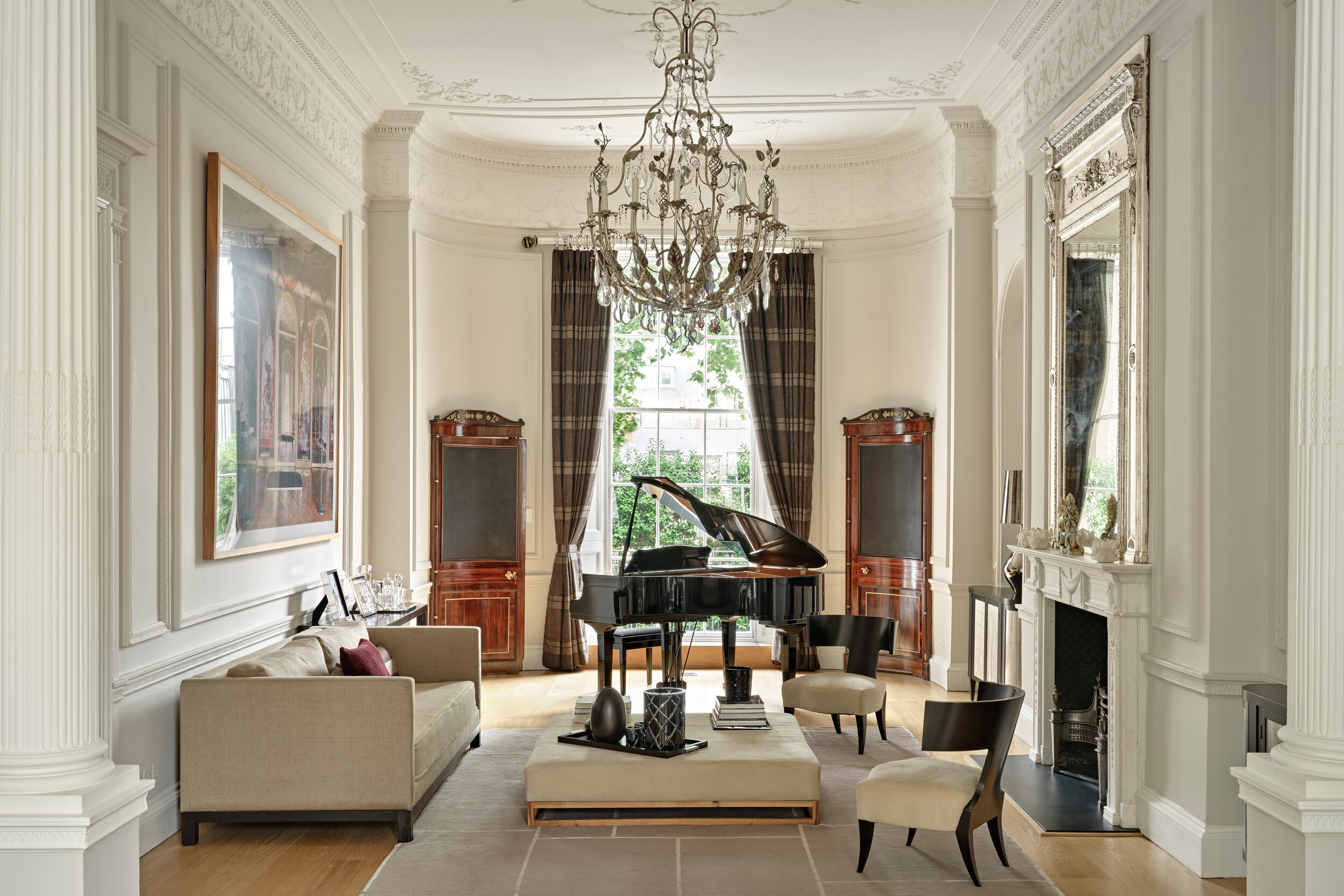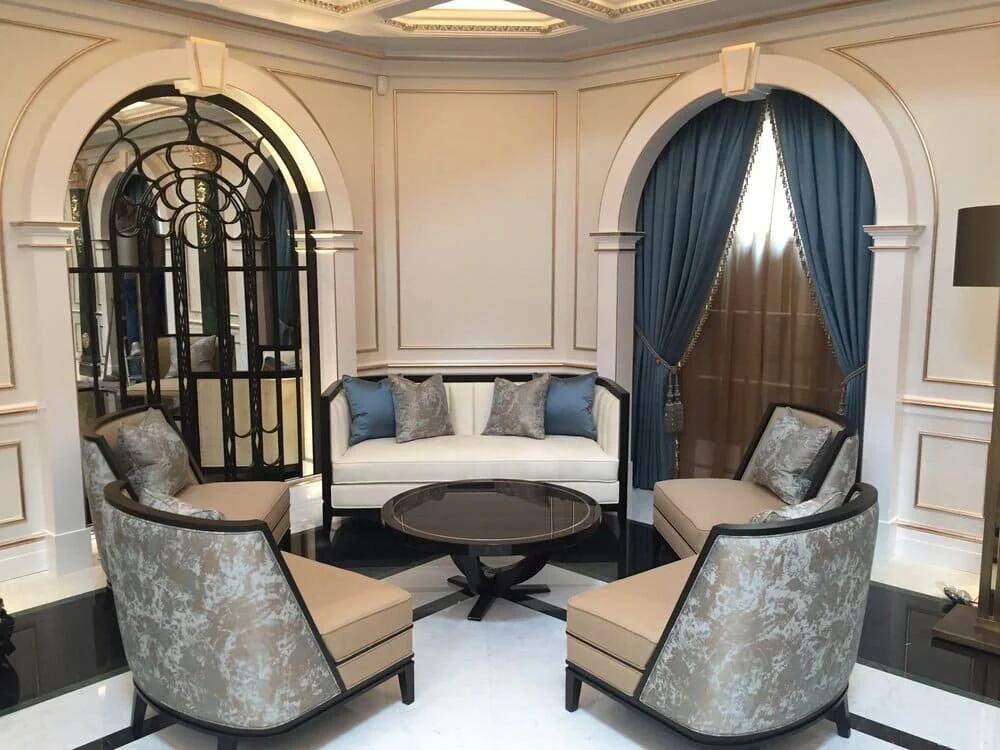Designed from inside out: Why architects should let interior designers take the lead when it comes to functionality
Understanding why architects should let interior designers take the lead on projects, requires an understanding of the difference between the two professions. When a building requires refurbishment and they’re both involved the two professions can become confusing. Their capabilities and responsibilities can overlap blurring lines as to whom is responsible for certain tasks. In order to separate the two professions and be able to tell them apart, we simply need to look these two questions:
What do they design?
What do they require to focus on their role and responsibilities?
What does an architect design?
An architect is responsible for the design of buildings and ensuring they’re functional and sustainable. Whether it’s a new build or a building that requires reconstruction, a qualified architect is required. Architects in the UK need to complete a five-year architect degree and work placement, which is recognised by the Architects Registration Board (ARB) and the Royal Institute of British Architects (RIBA). Their focus is the shell and core of the property to ensure its constructed accurately and effectively and also is in keeping with the surrounding areas. When you hire or work with an architect their requirements are usually focused on looking at the heritage of the building and its aesthetics. They also review what is required by the local authority.
What is the purpose of an interior designer?
Interior designers create spaces that are both beautiful and functional. In our case we focus on the interior design of luxury homes. Interior designers focus on the internal aspect of the property, from wall finishes, colour schemes, flooring, layouts and more. They are experts in the art of creating spaces that are aesthetically pleasing, ensuring the room was built for purpose. As the responsibilities of an interior designer focus on the internal aspects of the property, they tend to be highly detail oriented as they’ll be working to a briefing of the client’s requirements.
What are the differences between an architect and an interior designer?
Once you have broken down the differences between an architect and an interior designer, they do tend to stand out a lot more in how they are different. An architect is focused on the external and core structures while an interior designer is tasked with focusing on the internal layout, coordination of MEP, furniture and fixtures and more.
When should architects let interior designers take the lead?
Introducing interior designers at the beginning of every project ensures you can start building projects from the inside out. For us, before construction has even begun a luxury interior designer will ensure they fully understand your requirements with the space you want constructing. They will thoroughly understand your requirements for each space ensuring each room is built with purpose so it’s fully functional when complete.
Involving an interior designer so early on has fundamental key benefits:
They are specialists in space management
They can complement the architect
They can ensure the exterior is built to accommodate the internal conceptions
They can ensure each room serves its functional purpose
They can ensure the layout of the property serves purpose
They can coordinate with the other consultants (AV, MEP, Kitchen, Lighting)
They can oversee the entire project starting from the interior to the exterior, being the glue to your overall budget
They can ensure the internal specifications work within budget
This beautiful bathroom was built for purpose ensuring the space was available for the implementation of two sinks leaving ample room. Working closely with the client to understand their requirements, allowed us to ensure the lighting was exactly to their specification when installed.
As architects focus on the shell of the building, they should ideally be working alongside an interior designer to ensure clients requirements are met. It’s simpler for the interior designer to design the space conceptually and then work with an architect who can supply the correct structural space, than an architect to set the space and then the interior designer to work around a set space not fit for purpose. Essentially what this means is, architects should allow interior designers to be involved from the beginning of each project.
What are the advantages of allowing the interior designer to take the lead on functionality?
Space Management Specialists - An interior designer is a specialist in space management taking into account room functionality. Imagine, embarking on the construction of a property, having had the foundations, walls and ceiling in to find out the floor plan isn’t big enough for all the rooms required. Hiring an interior designer to assess this in their plans avoids this.
Layout and User Experience - Layout and user experience are extremely important. Designers are able to provide their expert advice. How we move from room to room can be addressed very early on in a project with the expertise of an interior designer who looks to plan these factors in.
Project Management - They’re able to conceptually bring your ideas to life and ensure you have all the right contractors or suppliers on your project to deliver. They can feed your intricate detail to the architect while instructing contractors or suppliers with your furnishing requirements.
Experts - Interior Designers are experts at what they do. You would be able to leave the creation of your project in the hands of a professional who will ensure the internal aspects are met alongside the external.
Time and Budget Management – Interior Designers who specialise in project management can ensure your project is on time and on budget. Overseeing an entire project also means they can carefully manage your project to ensure it runs smoothly through to completion. As interior designers are experts, they can also find ways to save you money when required.
Well Connected - Interior Designers are very well-connected individuals. Having shown you why they should take the lead on building projects, they also have a wealth of contacts which they utilise to complete your project, from recommending suppliers, contractors, architects and more. They’ll know exactly who is required to undertake and complete the task at hand.
What are the disadvantages of allowing the interior designer to take the lead on functionality?
The disadvantages seen with allowing interior designers to take the lead is that depending on the size of the project they can be deemed expensive. How much you will have to pay an interior designer depends on three key areas:
Size of Project – How large is your project? How much it likely to cost to carry out and complete your project? An interior designer will take this into account when quoting you their costs.
Time – How quickly would you like your renovation or refurbishment finished? Interior Designers will let you know a reasonable timescale for completing the project. However, if you’re looking to move quicker for completion, you’re likely to find costs will be higher to complete the project quicker.
Complexity – Depending on the size of the project and what needs to be done, complexity can affect your pricing.
Why your space should be created from the inside out?
Now we’ve established that the advantages of hiring an interior designer heavily outweigh the disadvantages so let’s dive in even deeper as to why your space should be created from the inside out.
There are two words you should hear when working with an interior designer and these are ‘design functionality’. Design functionality is the ability to fully create a space built for the purpose based on the customer’s needs. Interior designers are experts in listening to customers’ requirements and ensuring the functionality and aesthetics from their concept is realised in the creation of the project.
Ensuring your interior designer has these requirements from the outset, they can then begin communicating the work throughout their team. Interior designers can work alongside an architect to ensure the space required for the rooms functional purpose is considered and built into plans. For example, if you wanted to ensure your space in the kitchen was the heart of the home with additional spaces coming off of it; that thought would need to be planned as it’s very easy to simply place a kitchen in the corner of a property and to the client it is not best positioned.
A lovely townhouse in the heart of Knightsbridge where budget and delivery were key to the client. Working closely with the client we managed to transform his living space into a sociable space where the bronze kitchen became the heart of his home.
What is the difference between an interior designer and an interior architect?
These two professions are so similar in responsibilities that the differences between the two can be completely blurred, this is often the case across these professions. Earlier on we told you that an interior designer is focused on creating spaces that are both beautiful and functional. Well, an interior architect is an individual who has the combination to deliver structural work as well as interior design.
An interior architect will be able to consider the building, rebuilding or moving of structural walls being qualified to do so. They’re in a position to recommend structural changes and submit those changes whereas an interior designer cannot. An interior designer would need to work alongside an architect if structural changes were to be made to any properties.
Why will an interior designer ask about the function of the room?
An interior designers’ role and responsibility is to ensure they deliver spaces that are both beautiful and functional for their clients. Every client will have different needs and it’s their job to listen and factors this into their plans.
Upon first meeting your interior designer they should want to know exactly what the function of each room is, and this should be discussed in depth. They need to be able to understand your most specific, intricate requirements to enable them to deliver your concepts into your new space. A great interior designer will take their time to ask and listen to your answers to ensure they deliver the desired results.
Conclusion
As you’ve just read, having an interior designer lead your project comes with numerous positives. Building from the inside out truly means you can have a completed project that answers all your requirements. Then positively, an interior designer can organise and work with all the professionals, qualified or not, to ensure the project is on course to being delivered as per the client’s requirements.
If you’re interested in finding out more for your project, contact us here.









